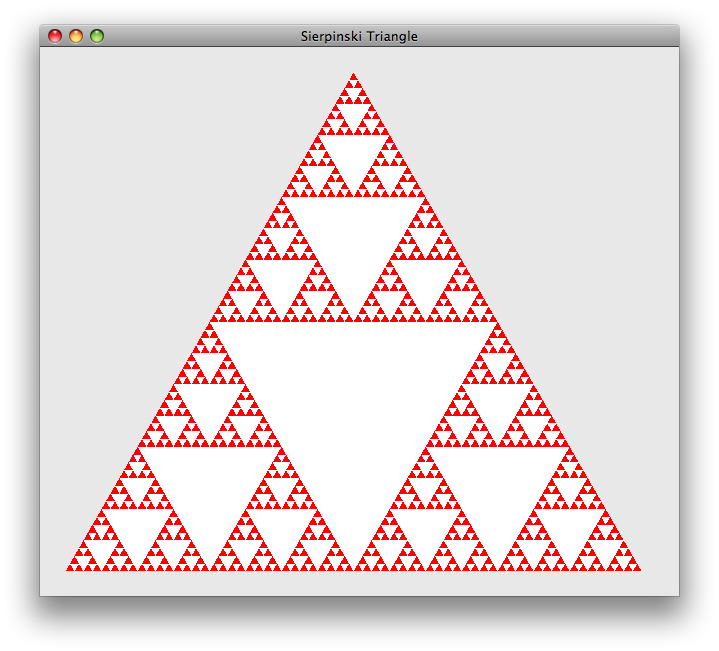Pair Programming: Work with your assigned partner to finish the BallWorlds exercise.
This is a pair programming assignment. You must work together following the rules of pair programming. That means one driver and one navigator working on a single copy of the program at a time. If I find that either member of your pair worked on any of the required stages of the assignment independently, that is grounds for that member to receive a zero for the assignment.
-
Your programming work for this part must be done in the
Recursionproject inside Eclipse. Use theSVN Repository Exploringperspective to check out this project, then switch back to theJavaperspective. -
In-class exercise: Complete the
isPalindrome()method in theSentenceclass. Your solution must be recursive. -
Implement, including JUnit tests, the
reverse()method in theSentenceclass. Your solution must be recursive. -
Complete the recursive
drawSierpinski()method in theSierpinskiRendererclass. This method should render the Sierpiński Triangle as shown in the figure below. The triangle is rendered by following these steps:- Draw a solid equilateral triangle.
- In a constrasting color, draw another solid equilateral triangle whose corner points are the midpoints of the original’s sides.
- Repeat this process recursively for each of the three corner triangles. That is, you will need three recursive calls in your method.
-
Technically speaking, this process is repeated an infinite number of times to create the true Sierpiński triangle, but we don’t have that much time. So, stop your recursion when the length of a side of the triangle becomes shorter than some fixed constant, say
5.
